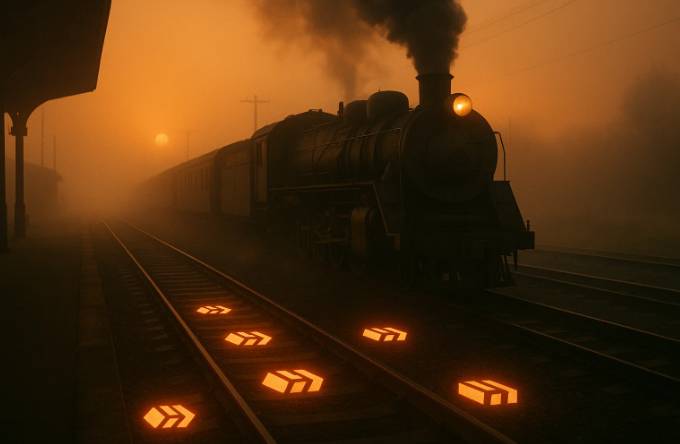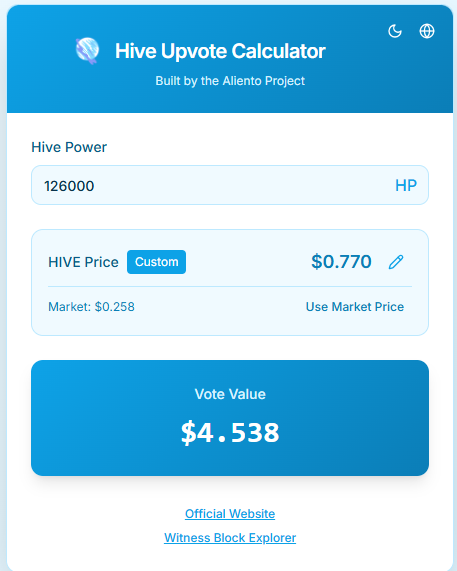Accumulation Season is Ending: Are You Ready? (Eng/Esp)
I could be wrong, but somehow I don’t really think that I am. It seems to me like the “goldilocks accumulation time” has ended for Hive. Which is to say, it’s about to become harder to power up.

There are lots of people here, both new and old, who don’t seem to get this part. They see Hive at low prices and think to themselves, “Not worth my time,” but that’s only because their myopic thinking is the anchor chained to their ankles. On the contrary, when prices are low is probably the best time to accumulate tokens – and that’s not just a biased opinion, that’s how the math works out.
Let’s see if I can explain this simply, so as not to bore anyone with math. When Hive is low, very low, big stakeholders – our whales – tend to be a lot heavier with their votes. Since their votes are worth less in dollar value, their curation efforts compensate by hitting harder, so to speak.
When prices are up, precisely the opposite happens. You might see posts, on average, looking beefier in dollar amount, but the Hive Power behind the post – the share of the pool – is smaller. This results in less Hive being distributed, and more HBD being spread out. Now, this isn’t a flaw per se; it’s by design.
We could conclude, quite easily, that the bear market is primed for accumulating tokens, and the bull market is the exact opposite. And although that’s obvious to old dogs like myself, it’s hard to get the message across to someone who doesn’t get it at all.
I want to share a little tool with those who follow my ramblings. I would love for people to play with this and imagine how they would behave, as a whale, if they had a powerful vote themselves.
Built by our very own @eddiespino, this tool has helped me illustrate the power of compounding our investment, and also clearly delivers the message of long-term thinking.
I hope my friend @steevc can forgive me for using him as an example, but I find his way of approaching Hive and curation precisely correct for the point I’m trying to make. I think most people know @steevc and know he’s been around for a while. He also does all his curation manually, which in my opinion makes him an exemplary Hivean.

My good friend @steevc does a pretty good job spreading out his vote among the peeps. It’s quite common to see him drop 80% weighted votes for posts he likes a lot, but on average, he’s always voting with about half his voting power. Makes sense to me, makes sense to him (of course), but what do you think will happen when the price of Hive rises?
Using @eddiespino’s tool, let’s assume Hive is at $0.77 in a month from now (completely possible). At that price, @steevc’s full vote will assign $4.53 from the reward pool. Now, I ask you, how many times a day do you think @steevc is going to drop a full upvote then?
One could argue – and I fully understand it – that this is good, that votes and thus rewards will be spread out more, and I agree. But I’m only making the case that the accumulation goldilocks era is over, not that it’s a bad time to be on Hive, because there’s never a bad time to be on Hive.
At any rate, I realize I’m not supposed to be giving people financial advice here, but up to a point, and with all the couched caveats and disclaimers one should hand out, I can’t help it. The train is leaving soon, and I have to ask you:
Are you happy with the size of your bag?
MenO
Spanish
Podría estar equivocado, pero de alguna manera no creo que lo esté. Me parece que el “tiempo dorado de acumulación” para Hive ha terminado. Es decir, está a punto de volverse más difícil hacer power up.
Hay mucha gente aquí, tanto nueva como antigua, que no parece entender esta parte. Ven Hive a precios bajos y piensan para sí mismos: “No vale la pena”, pero eso es solo porque su pensamiento miope es el ancla atada a sus tobillos. Por el contrario, cuando los precios están bajos, probablemente sea el mejor momento para acumular tokens, y no es una opinión sesgada, así es como funcionan las matemáticas.
Voy a intentar explicar esto de forma sencilla, para no aburrir a nadie con números. Cuando Hive está bajo, muy bajo, los grandes holders – nuestros whales – tienden a votar con más fuerza. Como en valor en dólares sus votos valen menos, sus esfuerzos de curación tienden a compensar, por así decirlo.
Cuando los precios suben, sucede exactamente lo opuesto. Puede que veas publicaciones, en promedio, con más dólares, pero la Hive Power detrás de ese post – su parte del pool – es menor. Esto resulta en menos Hive distribuido y más HBD repartido. Ahora, esto no es un defecto en sí, está diseñado de esa manera.
Podríamos concluir, fácilmente, que el bear market es ideal para acumular tokens, y el bull market es todo lo contrario. Y aunque esto es obvio para viejos lobos como yo, es difícil transmitir el mensaje cuando alguien no lo entiende para nada.
Quiero compartir una pequeña herramienta con los que siguen mis desvaríos. Me encantaría que jugaran con ella e imaginaran cómo se comportarían, como whales, si tuvieran un voto poderoso.
Creada por nuestro propio @eddiespino, esta herramienta me ha ayudado a ilustrar el poder de reinvertir nuestra inversión y también transmite claramente el mensaje de pensar a largo plazo.
Espero que mi amigo @steevc me perdone por usarlo de ejemplo, pero encuentro que su forma de abordar Hive y la curación es precisamente la correcta para lo que quiero explicar. Creo que la mayoría conoce a @steevc y saben que lleva tiempo aquí. Además, hace toda su curación de forma manual, lo que en mi opinión lo hace un Hiveano ejemplar.
Mi buen amigo @steevc hace un gran trabajo repartiendo su voto entre la gente. Es común verlo dejar votos de 80% de peso en publicaciones que le gustan mucho, pero en promedio, siempre vota con la mitad de su poder de voto. Tiene sentido para mí, tiene sentido para él (por supuesto), pero ¿qué crees que pasará cuando suba el precio de Hive?
Usando la herramienta de @eddiespino, supongamos que Hive está a $0.77 en un mes (completamente posible). A ese precio, el voto completo de @steevc asignará $4.53 del reward pool. Ahora te pregunto, ¿cuántas veces al día crees que @steevc dejará un full upvote entonces?
Se podría argumentar – y lo entiendo perfectamente – que esto es bueno, que el voto y las recompensas se repartirán más, y estoy de acuerdo. Pero solo estoy diciendo que la era dorada de acumulación terminó, no que sea un mal momento para estar en Hive, porque nunca es un mal momento para estar en Hive.
En fin, sé que no se supone que dé consejos financieros aquí, pero hasta cierto punto, y con todos los disclaimers y advertencias que se deben dar, no puedo evitarlo. El tren está por irse, y tengo que preguntarte:
¿Estás feliz con el tamaño de tu wallet?
MenO
Sending you Ecency curation votes.😉

Oh, thank you very much!
.77 sounds good to me. Wen .80? 😁
I agree, though, I have been waiting very patiently ... 🚀
at .80 I get another puppy!
Not trying to challenge what you're saying but there's still the option of earning hive from delegations right?
One could argue then that the amount of hive earned through delegations would be more.. wouldn't it?
you gain back the same amount of hive from delegations regardless of the price of hive. as far as I know, hive payouts from delegations are calculated with r-shares, which don't change regardless of the price of hive.
Hmmm
Rough...
I do have to think about how I use my vote as it can mean a lot to people. When the value really goes up then it brings responsibility. It will mean I can give decent rewards with a smaller percentage vote. I think I can already get above the dust threshold with 2%.
I have not been buying lately, but I may well do so again. I have targets for this year.
!BEER
View or trade
BEER.Hey @meno, here is a little bit of
BEERfrom @steevc for you. Enjoy it!Learn how to earn FREE BEER each day by staking your
BEER.https://x.com/jewellery_all/status/1947390470843470215
#hive
https://x.com/lee19389/status/1947429847615344850
#hive #posh